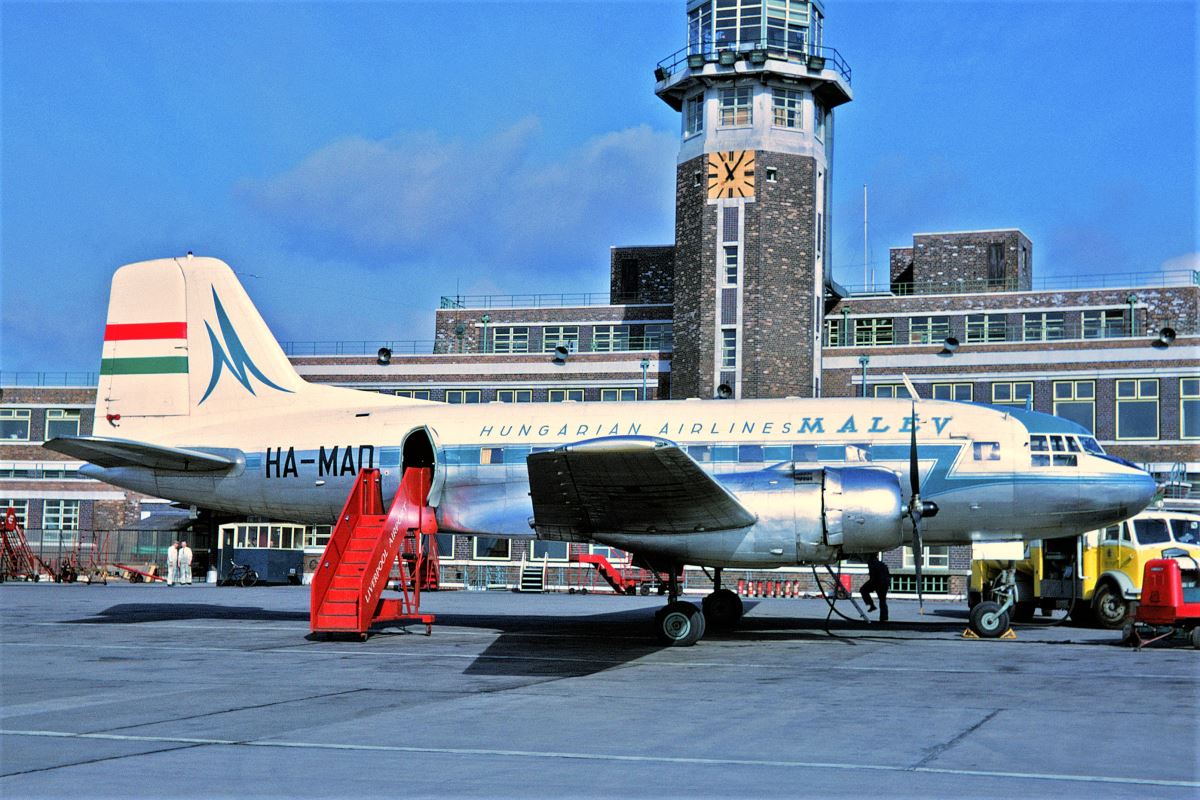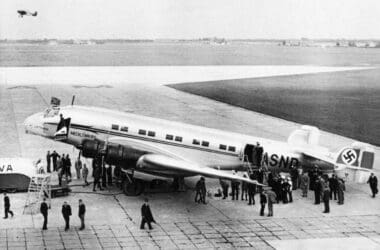The Ilyushin IL-14 was developed as a replacement for the Lisunov Li-2 (the Soviet licence built version of the Douglas DC-3) and first flew on 1 October 1950. Powered by a pair of Shvetsov ASh-82T-7 radial piston engines, it was designed for both passenger and freight operations.
Seating 24 to 32 passengers, the IL-14 was designed to fly up to 1,305km (811 miles) at a maximum speed of 417km/h (250mph). Popular with Eastern Bloc nations, it was also manufactured in East Germany and Czechoslovakia.
Ilyushin IL-14 Video
Following on from the last video on the Antonov An-10, this time we stay in the Soviet Union for a look at the Ilyushin IL-14. The first film runs for a minute, and shows exterior and interior views along with some information about the aircraft.
Next up is a two minute presentation giving the history of this plane in Russian. Even if you don’t understand what is being said, there’s plenty of decent vintage footage to see.
Finally, there is a short video that was put online last month. It shows one of the IL-14s flying directly towards the camera, presumably for aviation enthusiasts.
Now that is pretty cool! Having an aeroplane fly straight over you nice and low is some experience, so I’m sure they all enjoyed seeing that happen.
Overall Thoughts
A grand total of 1,348 Ilyushin Il-14s were produced through to 1960, making it a quite popular aircraft all round. Airline operators included Aeroflot, entering service in 1954, and others such as CSA Czech Airlines, Interflug, Malev, Air Koryo, CAAC, TAROM and JAT.
Two or three are reportedly still airworthy in Russia, which are maintained by enthusiasts, so I guess it’s still possible to see this plane in its element and flying.
Have you flown on board an IL-14 before? What did you think of the videos? Thank you for reading and if you have any comments or questions, please leave them below.
Enjoying the series? Check out the index to all the “Does Anyone Remember…” articles.
Flight reviews your thing? Mine are all indexed here.
Follow me on Facebook, Twitter and Instagram.
Featured image by Ken Fielding on Flickr via Wikimedia Commons.













I want one Daddy, NOW!
Hahaha! It would fit in any garage, it seems 🙂